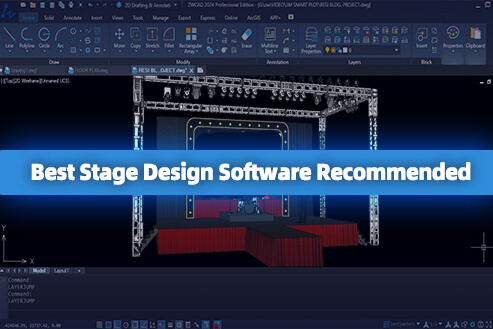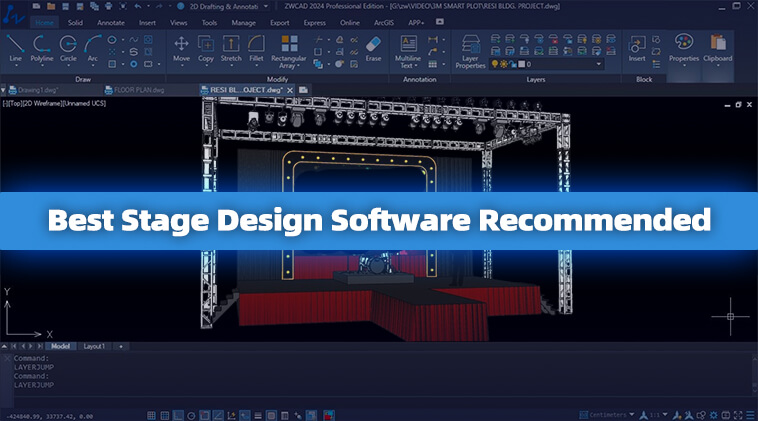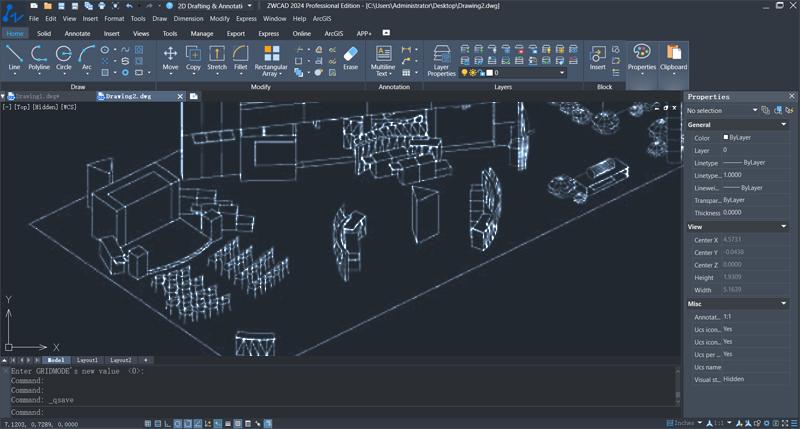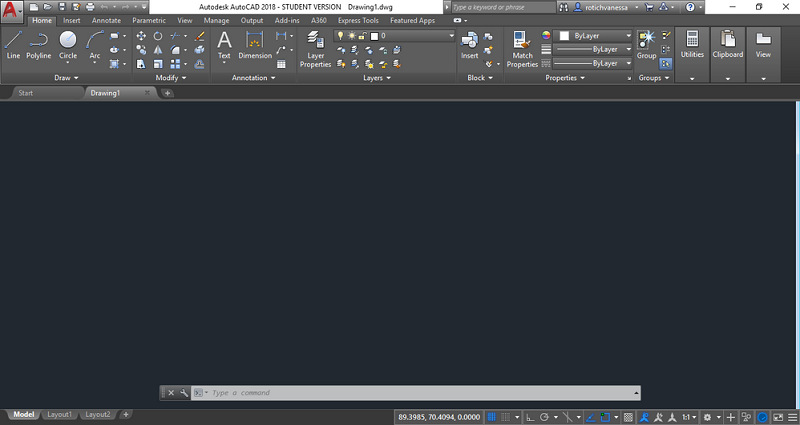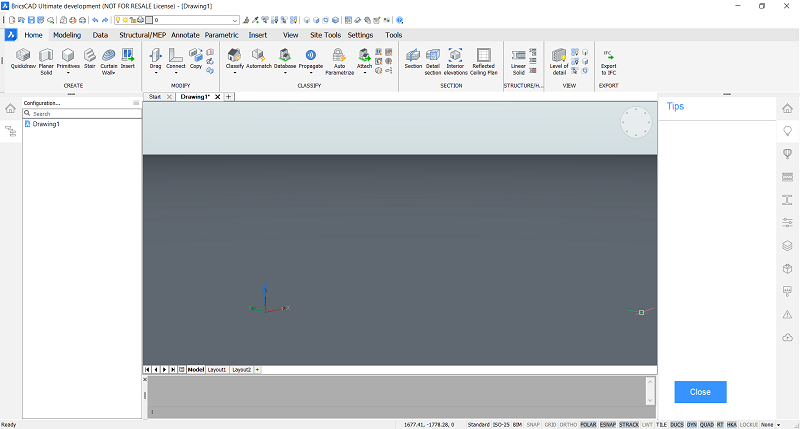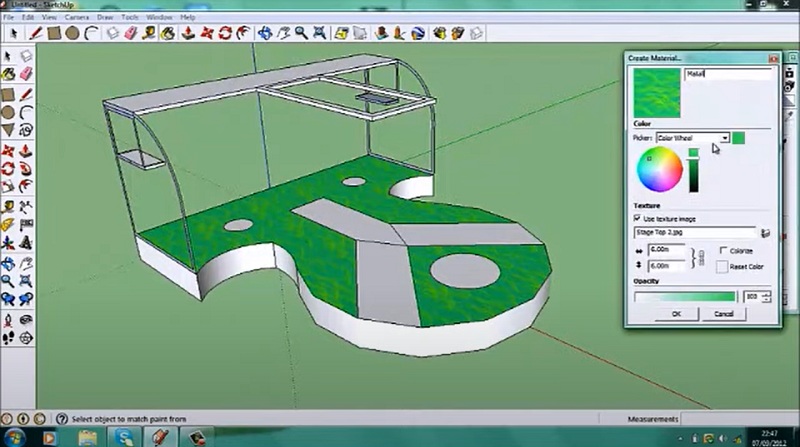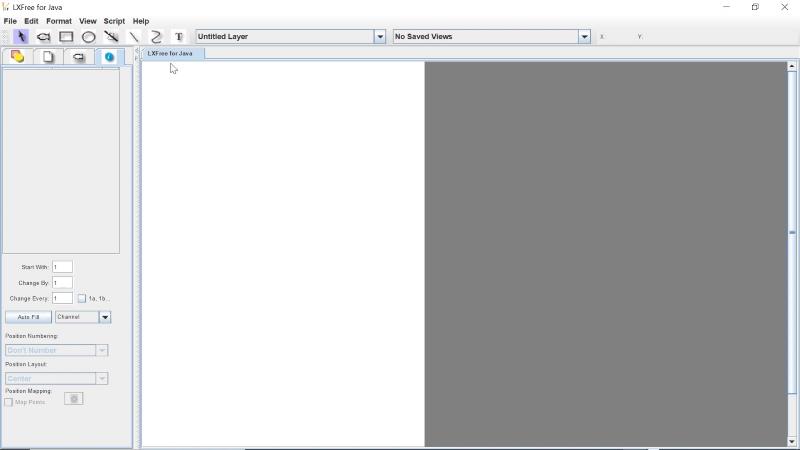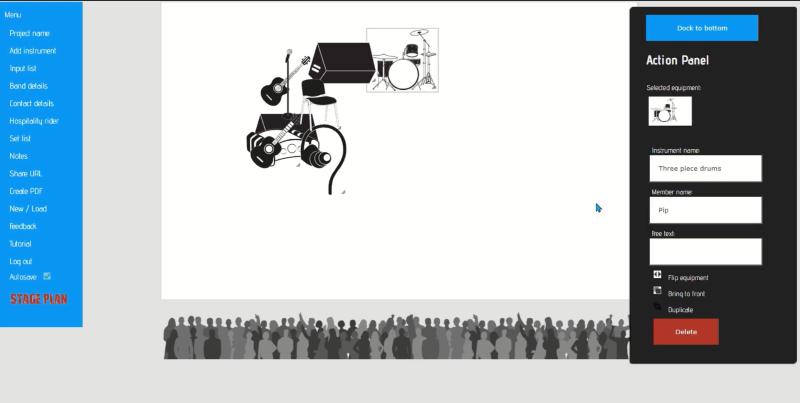Stage design describes the process of designing and planning a stage for performances, shows, or other artistic activities. It is an integral part of a performance, serving to enhance not only the visual aesthetics but also to elevate the overall quality and audience experience of the show. A well-crafted stage design relies on user-friendly stage design software, whether you’re planning a unique stage for a friend’s birthday surprise or designing an event setting for a company conference.
Therefore, we’re going to share seven of the best stage design program options in this article, including both free and paid choices. These tools are not only easy to use but also capable of transforming your ideas into stunning stage scenes. Whether you’re a novice exploring stage design or a professional designer looking for tools to enhance efficiency, you can find a powerful tool that is perfect for your needs here.
Contents
- 1. Key Considerations When Picking Stage Design Software
- 2. Detailed Review of the 7 Best Stage Design Software
- 3. FAQs About Stage Design Software
- 4. Conclusion
Key Considerations When Picking Stage Design Software
Stage Design Software is a specialized software tool designed to assist stage designers in planning and visualizing various aspects of a stage, including stage layout, lighting effects, sound settings, and more. Selecting the best event design tool is never a quick decision. Here are some key factors you may need to consider.
- Rich Functionality: As stage design involves various factors such as overall stage structure, size, background, lighting, special effects, etc., stage design software needs to have rich functionality. Especially important are features like 3D modeling and rendering, which allow designers to simulate the entire look and feel of the stage on a computer and visualize the final stage effect more intuitively.
- User-Friendly Interface: The usability of the software directly affects the time required for design. Software with a simple interface enables beginners to grasp functions more quickly without the deep learning curve. For professional designers, a user-friendly UI enhances efficiency and workflow.
- Graphic Quality and Rendering Effects: Compared to other designs, stage design demands a higher level of artistic expression. Therefore, there is an increased emphasis on graphic quality and rendering effects. High-quality graphics effectively showcase textures, lighting, and color depth, crucial for props and background design on the stage. Excellent rendering effects contribute to a realistic portrayal of the stage scene during rehearsals, aiding designers in identifying and addressing potential issues.
- Compatibility: While no software can cover all user needs, good integration with other software or tools can compensate for functionality gaps. Therefore, when choosing software, consider whether it integrates well with other tools. For example, in stage design, lighting is essential, and integration with lighting design software can adjust different lights to create various atmospheres.
- Price and Licensing: This is crucial, especially for individual users. Stage design software comes in both free and paid versions. Consider whether a one-time purchase or a subscription model aligns better with your budget.
- Real-time Collaboration and Sharing Features: If you work in a collaborative team, it’s advisable to check whether the software offers real-time collaboration and sharing features. This ensures that your team members or clients can access the latest design progress promptly.
| Related Article: |
Detailed Review of the 7 Best Stage Design Software
Let’s now take a closer look at the specifics of the top 7 stage design software. Hopefully, you can find the one that suits your needs.
Top 1. ZWCAD
ZWCAD is professional CAD software that is both beginner-friendly and suitable for advanced users. It offers a rich set of drawing tools, such as lines, arcs, polygons, etc., making it easy to create the basic shapes and outlines of a stage. Better than that, ZWCAD develops unique innovation tools like Smart Mouse and Smart Plot to enhance drawing efficiency and reduce repetitive operations. It boasts powerful 3D modeling capabilities, allowing users to create grids and solid models directly or based on existing 2D drawings. Various modeling tools are provided for creating and modifying 3D models.
In the latest 2026 version, ZWCAD has added two new features to its innovation tools: Smart Match and Smart Dimension. Smart Match automatically identifies identical shapes and supports batch editing to improve drawing efficiency, while Smart Dimension automatically recognizes object types and generates corresponding dimensions, reducing manual effort.
Note:
ZWSOFT has released ZWCAD Flex, a subscription-based CAD solution currently available exclusively in the United States and Canada.
Users outside these regions are encouraged to contact their local ZWSOFT sales team to explore perpetual license options for ZWCAD.
Stage design typically involves multiple elements like lighting, backgrounds, props, etc. ZWCAD’s layer management feature helps organize and manage these elements effectively. A standout feature of ZWCAD is its support for APIs like LISP, VBA, ZRX, and .NET, facilitating easy development or migration of third-party applications through scripting. For repetitive elements like stage constructions and lighting equipment, ZWCAD comes with a block editing function that allows one-click insertion, improving your design efficiency.
Pros:
- Customizable materials and textures for creating realistic stage scenes.
- Integration of lighting devices and various decorative elements to enrich the stage.
- One-time payment license, saving long-term costs.
- Clean and user-friendly interface.
- Stable performance, quick opening, and smooth operation of complex files.
- Rich features with high customization.
Cons:
- May require some time for beginners to get accustomed to it.
Top 2. VectorWorks
VectorWorks Spotlight is specialized software within the VectorWorks series, developed by Nemetschek Group, catering to the entertainment and stage design industry. It provides professional stage design tools, including lighting design, audio design, visual effects, and more, allowing comprehensive stage project planning within a single software. This stage and lighting design software features an extensive library named “Vision”, which encompasses various entertainment design elements such as lighting, audio, video, scenic, and more. Users can choose elements from this library for real-time simulation and preview of lighting, sound, and visual effects, ensuring that the design meets expectations in actual execution.
VectorWorks Spotlight is compatible with both Windows and macOS operating systems. One of its standout features is the incorporation of BIM functionality. It can generate information about attributes, dimensions, and materials related to stages, lighting, and sound equipment, and these parameters automatically adapt to design changes without manual updates. VectorWorks Spotlight includes a Braceworks add-on module, enabling detailed analysis of the stability and load capacity of stage structures.
Pros:
- Offers comprehensive design tools for stage sets, lighting, audio, and more.
- Powerful BIM functionality.
- Integration of the Vision library for real-time entertainment design simulation and preview.
- Multiple designers can simultaneously edit and design within the same project.
Cons:
- Has a certain learning curve, especially for those unfamiliar with BIM.
- Demands high computer resource requirements, requiring robust hardware configurations.
Top 3. AutoCAD
Whether you have a deep understanding of stage design or not, you’ve likely heard of AutoCAD as there are numerous AutoCAD reviews online. While it is a general-purpose CAD tool, it is also applicable in stage design due to its integration of specialized toolsets across various fields and support for compatible add-on apps and APIs. AutoCAD combines 2D drafting and 3D modeling capabilities, allowing you to create stage plans, elevations, and sections, and model with solids, surfaces, mesh objects, and render, visualizing the stage set and final effects. You can even customize materials and lighting effects for your models.
AutoCAD boasts high precision and measurement tools, enabling accurate measurement and positioning of stage elements. The software includes features to automate tasks, such as Smart Blocks, which can automatically place blocks based on previous placements or quickly find and replace existing blocks. This eliminates the need for manual placement or replacement when designing or adjusting repetitive elements like lighting or props.
Pros:
- Rich functionality; applicable to various industries and branches.
- High precision, capturing intricate details.
- Automation features that save design time.
- Integration of professional tools from multiple industries.
- Works in a 3D space.
Cons:
- Relatively expensive, and not suitable for individuals or those with a limited budget.
- A steeper learning curve; requires significant time to master.
- Some features may be considered excessive for stage design.
- Demands high computer processing power.
Top 4. BricsCAD
BricsCAD is another outstanding professional CAD tool that serves as an all-in-one solution, bringing together 2D drafting and 3D modeling. Its major strengths lie in its clean interface and the Drawing Explorer feature. The interface of BricsCAD is intuitively tabbed, with a clean layout, and customizable toolbars. On the left side of the software’s homepage, there is a ribbon interface containing various tools you might need, including some office tools like an address book, calendar, messenger, etc.
BricsCAD boasts powerful 3D modeling tools. Its 3D direct solid modeling is accomplished through a geometric constraints solver so that users can directly edit entities in the design without relying on parameters or a history tree. This flexibility enables users to adjust models more dynamically, ensuring accuracy and consistency in stage element design. BricsCAD integrates BIM functionality, The context-sensitive Quad Cursor can detect the dimension in use and adjust commands to meet user needs. The software also features 3D virtual roaming, allowing you to simulate stage setups during the design phase, observe models from all directions, and evaluate how the stage will appear under different conditions.
Pros:
- Comprehensive design and modeling tools covering 2D drafting, 3D modeling, BIM, etc.
- Runs on multiple platforms, including Windows, macOS, and Linux.
- Simple user interface.
- Provides rich APIs and customization tools.
Cons:
- It may lead to high CPU usage.
- Its customer support has a delayed response.
- Some of the settings are a little hard to find and manipulate.
Top 5. SketchUp
SketchUp is a powerful tool in the realm of 3D, primarily known for architectural and interior design, but it can also be applied to stage design. It comes in both a free and a paid version. The free version, SketchUp Free, is an online tool that is convenient to use. If you are new to 3D modeling, this tool is worth trying as it is renowned for its intuitive and user-friendly 3D modeling tools, simplifying the entire stage creation process.
This 3D stage design software allows users to access Trimble’s 3D Warehouse, a repository with a vast collection of online 3D models. Here, you can find various components and models needed for stage design, such as audio equipment and stage lighting. SketchUp also supports ambient light settings, enabling users to adjust the overall scene’s brightness. Additionally, you can add rendering and lighting plugins to enhance the realism of the stage.
Pros:
- Offers a free version, an online tool that doesn’t require software downloads.
- Intuitive and user-friendly interface.
- Abundant online resources, model libraries, and plugins.
- Rich modeling tools for quick prototyping.
Cons:
- Not suitable for complex parametric modeling.
- Relatively limited in 2D drawing functionality.
Top 6. LXFree
If you’re in search of stage lighting design software, don’t overlook LXFree. It excels in lighting design functionality. True to its name, LXFree is completely free to use and is compatible with macOS, Windows, and Linux. LXFree is currently in the development and testing phase.
It serves as plotting software to map out your lighting. What makes it even more impressive is its ability to generate paperwork. It provides you with a report by linking the graphics, attached data, and additional databases related to the properties of these objects.
Pros:
- Offers rich functionality in lighting layout.
- Completely free to use.
- Compatible with multiple platforms: macOS, Windows, and Linux.
- Palette and object properties are provided.
Cons:
- Limited in terms of functionality.
Top 7. Stage Plan
The last stage design software on the list is Stage Plan. It is designed to create stunning stage designs for bands, duos, singers, songwriters, orchestras, DJs, and anyone on tour. With this software, you can access nearly 2000 lighting instruments and equipment components. Once the design is complete, you can send the provided URL to the venue’s engineer.
Stage Plan offers a trial version that can be used for free for 28 days, and it also has a subscription service. In the subscription version, you can do more, such as importing lists, saving and editing, and creating PDFs.
Pros:
- Focuses specifically on stage design, providing rich stage equipment elements.
- Offers multiple subscription packages, with the option for one-time payment.
Cons:
- Limited to a free trial period of 28 days, with many restrictions.
- Limited functionality, primarily focused on adding and arranging equipment elements directly without additional features.
FAQs About Stage Design Software
Do Set Designers Use AutoCAD?
Yes, some set designers do use AutoCAD because it holds a leading position in CAD and is a common professional CAD tool. However, despite its powerful features, AutoCAD comes with a relatively high price tag. Therefore, many people are now turning to AutoCAD alternatives such as ZWCAD for their design tasks. ZWCAD not only runs faster and offers similar features to AutoCAD but also incorporates intelligent features that enhance workflow efficiency. Importantly, ZWCAD provides a one-time purchase license for $899, making it a much more cost-effective choice.
Is There Free Stage Design Software Online?
Yes, there is free stage design software available online, and one such example is SketchUp Free. It is a module within SketchUp that allows you to perform free 3D modeling directly in your browser. While the functionality of this online software is more basic compared to the paid version, and it may not be as feature-rich, its interface is intuitive and user-friendly. Whether or not you have experience in stage design, SketchUp Free is easy to pick up. You can also save your models in SketchUp Free and store them in the cloud.
Conclusion
| Types | 3D Rendering Capability | Price | Supported system | Custom Materials | Performance | |
| ZWCAD | 2D+3D | Advanced | Standard: $322/year
Pro: $432/year One-time purchase: $899 |
Windows, Linux; mobile version provided | Yes | High |
| VectorWorks | 2D+3D | Advanced | $1530/year | Windows, macOS | Yes | High |
| AutoCAD | 2D+3D | Advanced | $1975/year | Windows, macOS | Yes | High |
| BricsCAD | 2D+3D | Moderate
|
Lite: $314/year
Pro: $677/year One-time purchase: Lite: $708 Pro: $1518 |
Windows, macOS, Linux | Yes | Moderate |
| SketchUp | Mostly 3D | Moderate | Free
Go: $119/year Pro: $349/year |
Windows, macOS, Linux | Yes | Moderate |
| LXFree | 2D | No | Free | Windows, macOS, Linux | No | Low |
| Stage Plan | 2D | No | Multi-Plan: $5.99/6 months
Pro Plan: $12.99/pay once |
Web-based | No | Low |
These are the 7 best stage design software options we’ve shared with you, each with its own strengths and weaknesses in stage design. ZWCAD, VectorWorks, AutoCAD, and BricsCAD provide a combination of 2D and 3D capabilities, offering rich functionalities. SketchUp, LXFree, and Stage Plan focus specifically on either 3D or 2D, but they tend to be more budget-friendly.
If we were to pick the overall best among these 7, we would recommend ZWCAD. It boasts powerful performance and runs at high speed. In comparison to the industry leader AutoCAD, ZWCAD offers a more cost-effective solution, making it a comprehensive software suitable for both beginners and professionals alike.
.png)
